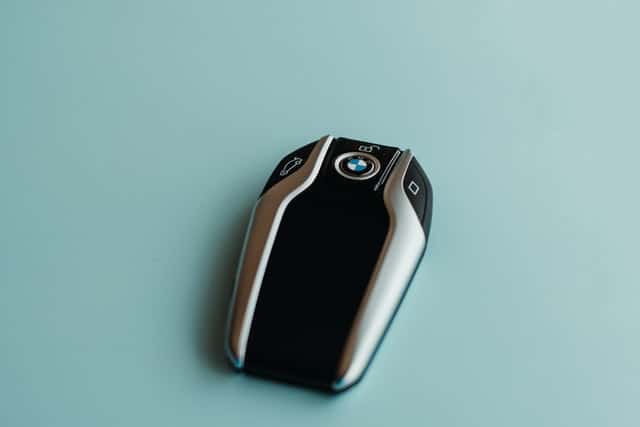Last Updated on January 22, 2025 by Nate Schnell
Replacing the battery in your car key is a simple task that anyone can handle with a bit of guidance. Whether your key fob has stopped responding or its range has diminished, a fresh battery can often resolve the issue. This guide walks you through the process of changing your car key battery, helping you do it with ease and confidence.
Understanding Your Key Fob Type
Before diving into the replacement process, it’s crucial to identify what kind of key fob you have. Not all key fobs are the same, and knowing your type will help you select the correct replacement battery.
Manufacturer-Specific Key Fobs
Many automakers design proprietary key fobs that require specific replacement batteries. For example, brands like Honda, Toyota, and Subaru each use unique designs that may also need special tools to access the battery compartment. To identify your key fob type:
- Check the Owner’s Manual: Look for information about your key fob model and recommended battery type.
- Search Online: Use your car’s make and model to find battery details.
- Inspect the Key Fob: Some key fobs have the battery type printed inside the compartment or on the back.
If your manufacturer-specific key fob needs special tools, consider consulting a professional to avoid accidental damage.
Universal Key Fobs
Universal key fobs are compatible with multiple car models and typically use standard coin-cell batteries, such as CR2032 or CR2025. These key fobs are often easier to manage, with straightforward designs that allow for simple battery replacement.
Tools and Materials You’ll Need
To replace your car key battery, gather the following items:
- Replacement Battery: Choose a high-quality battery from a trusted brand like Energizer or Duracell. Check your key fob’s manual or online resources to ensure compatibility.
- Small Screwdriver: Precision screwdrivers (1.4mm to 2.4mm) work well for opening compartments secured with screws.
- Thin Blade or Plastic Pry Tool: Ideal for fobs that snap open. Avoid using metal tools to prevent scratches or damage.
Step-by-Step Guide to Replacing Your Key Battery
Step 1: Accessing the Battery Compartment
- Locate the Seam or Notch: Most key fobs have a visible seam or small notch along the edge. This is where you’ll insert your tool to open it.
- Open the Fob: Use a thin blade, plastic pry tool, or your fingers to carefully separate the two halves of the fob. If your fob is secured with screws, remove them first using a precision screwdriver.
Step 2: Removing the Old Battery
- Identify the Battery: Once the fob is open, locate the battery and note its type and orientation. The positive (+) and negative (-) sides should be clearly marked.
- Safely Remove the Battery: Gently slide the battery out of its compartment. Handle it by the edges to avoid contact with the terminals.
Step 3: Installing the New Battery
- Insert the Replacement Battery: Align the new battery with the correct polarity (positive side up or down as indicated). Ensure it fits snugly in the compartment.
- Secure the Battery: If your fob has clips or screws, reattach them to hold the battery firmly in place.
Step 4: Reassembling the Key Fob
- Align and Close the Fob: Carefully align the two halves of the fob and snap them back together. If screws were removed, tighten them securely.
- Test the Fit: Ensure the fob is securely closed and there are no gaps along the seam.
Testing Your Key Fob
After replacing the battery, confirm that your key fob is functioning correctly:
- Test Basic Functions: Try locking and unlocking your car and opening the trunk. Stand near the vehicle to ensure proper operation.
- Check Keyless Entry: For cars with keyless entry, verify that you can start the engine without inserting the key.
If the fob still doesn’t work, consider reprogramming it (refer to your owner’s manual for instructions) or consult a professional for further troubleshooting.
Troubleshooting Common Issues
If replacing the battery doesn’t solve the problem, the issue might lie elsewhere:
- Reprogram the Key Fob: Some key fobs lose their programming when the battery is completely drained. Follow the manufacturer’s instructions to reprogram.
- Inspect for Damage: Check the fob for physical damage or corrosion that could interfere with functionality.
- Seek Professional Help: If all else fails, a locksmith or dealership can diagnose and resolve more complex issues, such as problems with the car’s receiver or the fob’s internal circuitry.
Final Thoughts on Replacing Your Car Key Battery
Replacing your car key battery is an easy, cost-effective solution for common key fob issues. By identifying your key fob type, using the correct tools, and following the steps outlined above, you can restore your key fob’s performance in minutes.
For long-term reliability:
- Always use high-quality replacement batteries.
- Avoid exposing your key fob to extreme temperatures or moisture.
- Test your key fob regularly to catch any issues early.
If you encounter difficulties or suspect the problem isn’t battery-related, don’t hesitate to seek professional assistance to keep your key fob functioning at its best.



